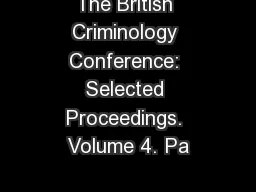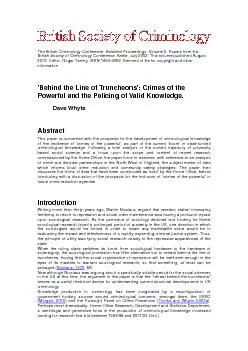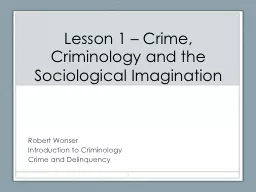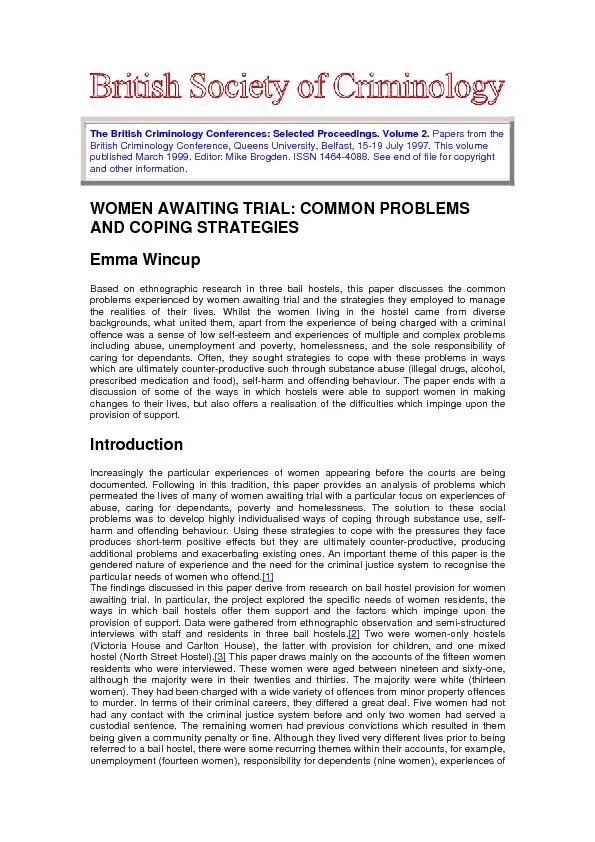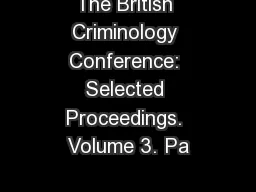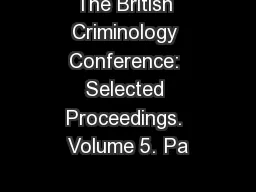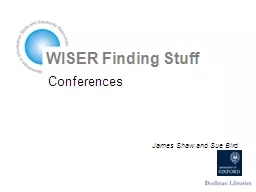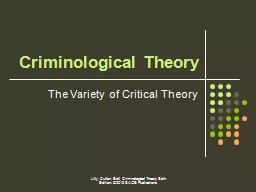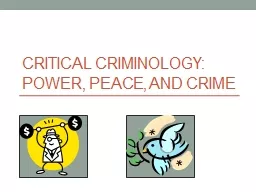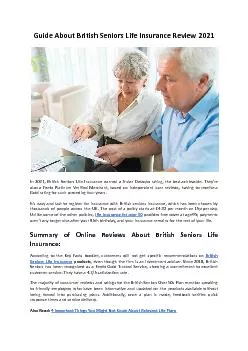PDF-The British Criminology Conference: Selected Proceedings. Volume 4. Pa
Author : debby-jeon | Published Date : 2015-08-20
Abstract Although there exists a large body of research literature on the jury system only a small amount of research has been able to tap the attitudes and behaviour
Presentation Embed Code
Download Presentation
Download Presentation The PPT/PDF document "The British Criminology Conference: Sele..." is the property of its rightful owner. Permission is granted to download and print the materials on this website for personal, non-commercial use only, and to display it on your personal computer provided you do not modify the materials and that you retain all copyright notices contained in the materials. By downloading content from our website, you accept the terms of this agreement.
The British Criminology Conference: Selected Proceedings. Volume 4. Pa: Transcript
Download Rules Of Document
"The British Criminology Conference: Selected Proceedings. Volume 4. Pa"The content belongs to its owner. You may download and print it for personal use, without modification, and keep all copyright notices. By downloading, you agree to these terms.
Related Documents

